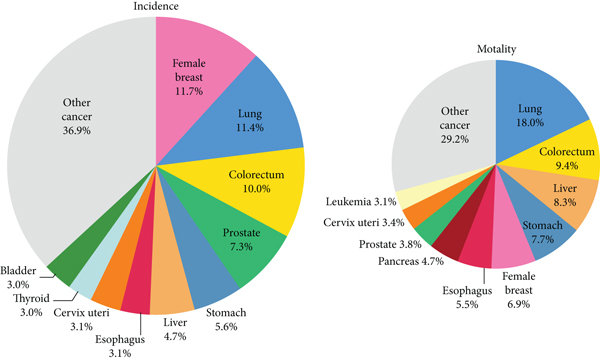Heavy metals pose a significant danger due to their resistance to chemical or biological degradation. Once acquired, they accumulate within certain parts of the body, unable to be metabolized, and even when diluted in the bloodstream, they can cause health damage. Consequently, proper control of these metals, even in consumable products, is mandated by law to mitigate adverse health effects, including coughing.
Recent studies highlight that populations exposed to areas with heightened heavy metal contamination face an increased risk of certain types of cancer. Numerous investigations conducted in industrialized cities reveal that particulate matter carries elements such as C, S, Ni, Pb, Cd, Fe, Cr, As. To determine the heavy metal content, the atomic absorption technique, renowned for its sensitivity, is often employed.
Breast cancer stands as the most prevalent form of malignancy among American and European women. Despite decades of research, the incidence of breast cancer continues to rise. In 2022 Breast cancer was the most common cancer in women in 157 countries out of 185 and caused 670 000 deaths globally according to World Health Organization.
Traditionally, cancer treatment has adopted a universal approach, selecting drugs and therapies based on population parameters rather than individual response probabilities. However, due to the highly heterogeneous nature of cancer, such universal approaches often prove ineffective, as patient responses to therapies vary significantly due to individual factors.
Heavy metals, through various pathogenetic mechanisms, promote the progression of breast cancer and diminish its treatment sensitivity. Thus, detailed knowledge of heavy metal levels in the body could aid in both preventing such diagnoses and enhancing treatment effectiveness. Najim (2016) at Misan University, Iraq utilized Aurora technology to identify trace elements such as chromium (Cr), cadmium (Cd), manganese (Mn), cobalt (Co), nickel (Ni), selenium (Se), zinc (Zn), iron (Fe), copper (Cu), and magnesium (Mg) involved in radical reactions. The study involved two groups, each comprising 75 individuals: one group consisting of healthy women and the other of breast cancer patients. Using the Aurora Biomed’s AI1200 Atomic Absorption Spectrophotometer with an air-acetylene burner, the concentrations of these elements in each serum sample were determined. Significant differences in heavy metal levels were observed between the two groups, suggesting that elevated trace element levels could lead to the formation of free radicals or other oxidative processes.
It’s very important to seek different routes to improve early detection, Insufficiency to approach for early diagnosis and effective treatment remains a crucial factor for higher breast cancer mortality, especially in developing countries.

To learn more about Aurora’s elemental analysis solutions, please click here.



